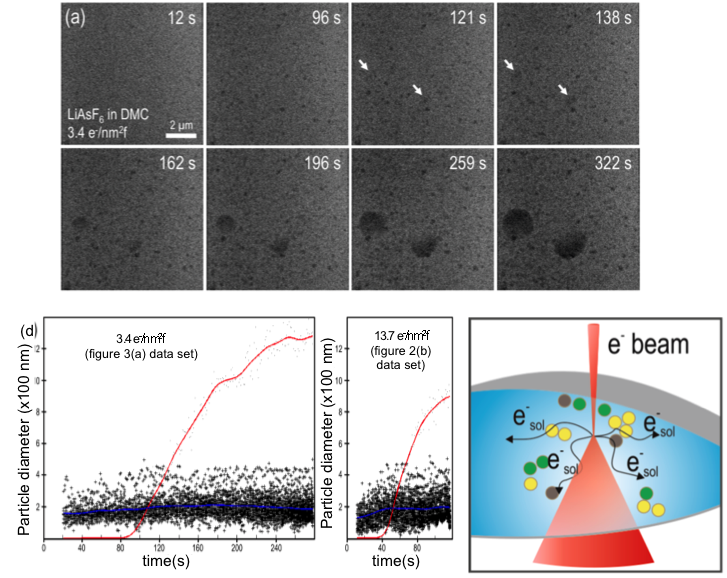
(Bottom Left) Two distinct degradation processes observed in the LiAsF6 in DMC electrolyte. Plots of particle diameter evolution using multitarget particle tracking for two electron doses. Once primary growth of particles stabilizes, secondary growth of an organic phase is observed.
(Bottom Right)Schematic illustration of the fundamental concept of electron beam-induced degradation of electrolytes in the fluid cell in the STEM
Scientific Achievement
- Directly observed a sequence of interconnected electrolyte degradation mechanisms to evaluate stability and degradation in battery electrolytes
- Developed a rapid method using STEM to evaluate stability and degradation in battery electrolytes
Significance and Impact
- Using liquid stages in the STEM, it is possible to monitor dynamic processes during Li-ion battery operation at high spatial resolution
- This in-situ approach can be used to scan new libraries of electrolytes to rapidly develop and identify next-generation electrolytes
- This approach could aid a systematic study of electrolyte degradation for any controlled/quantitative in operando liquid stage experiment in the STEM for battery research
Research Details
- Explored five different electrolytes commonly used for Li-ion and Li-air battery applications using in-situ liquid STEM
- Identified conditions for highly stable electrolytes against the electron beam
Work performed at Pacific Northwest National Laboratory (JCESR partner), UC-Davis and Florida State University. P. Abellán, B.L. Mehdi, L.R. Parent, M. Gu, C. Park, W. Xu, Y. Zhang, I. Arslan, J-G Zhang, C. Wang, J.E. Evans, N.D. Browning. Nano Letters, 2014.
DOI: 10.1021/nl404271k

